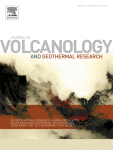Ver ítem
- xmlui.general.dspace_homeCentros Regionales y EEAsCentro Regional Patagonia NorteEEA BarilocheArtículos científicosxmlui.ArtifactBrowser.ItemViewer.trail
- Inicio
- Centros Regionales y EEAs
- Centro Regional Patagonia Norte
- EEA Bariloche
- Artículos científicos
- Ver ítem
Ash resuspension related to the 2011–2012 Cordón Caulle eruption, Chile, in a rural community of Patagonia, Argentina
Resumen
The 2011–2012 Cordón Caulle eruption emitted about 1 km3 of rhyodacitic tephra. Dominant westerly winds in the region caused most of the primary tephra to deposit in neighboring Argentina. In addition to the impact of widespread dispersal and fallout of primary tephra during the eruption, Argentinawas also significantly affected by remobilization of the primary ash even several years after the climactic phase of the eruption. In this mixed methods
[ver mas...]
The 2011–2012 Cordón Caulle eruption emitted about 1 km3 of rhyodacitic tephra. Dominant westerly winds in the region caused most of the primary tephra to deposit in neighboring Argentina. In addition to the impact of widespread dispersal and fallout of primary tephra during the eruption, Argentinawas also significantly affected by remobilization of the primary ash even several years after the climactic phase of the eruption. In this mixed methods study,we combine aspects of natural and social sciences to characterize the ash resuspension events associated with the 2011–2012 Cordón Caulle deposits and assess the impacts on the Argentinian farming community
of Ingeniero Jacobacci in the Patagonian Steppe.
Our findings showthe primary importance of wind, rainfall and ash availability in controlling the occurrence and persistence of ash resuspension events. The role played by these variables was also reflected in the seasonal distribution of events observed. Regarding the impacts, our results complement those of earlier studies and demonstrate that ash resuspension events can exacerbate the negative impact of primary tephra fallout events from the time of deposition to many years after the eruption. Only after five years has the environment and the farming community begun to show signs of recovery. Our findings also highlight the importance of assessing ash resuspension events in multi-hazard scenarios involving volcanic and hydrometeorologic hazards.
[Cerrar]

Autor
Forte, Pablo;
Dominguez, Lucia;
Bonadonna, Constanza;
Gregg, Chris E.;
Bran, Donaldo Eduardo;
Bird, Deanne;
Castro, Jonathan M.;
Fuente
Journal of Volcanology and Geothermal Research 350 : 18-32 (January 2018)
Fecha
2018
ISSN
0377-0273
Formato
pdf
Tipo de documento
artículo
Palabras Claves
Derechos de acceso
Restringido
 Excepto donde se diga explicitamente, este item se publica bajo la siguiente descripción: Creative Commons Attribution-NonCommercial-ShareAlike 2.5 Unported (CC BY-NC-SA 2.5)
Excepto donde se diga explicitamente, este item se publica bajo la siguiente descripción: Creative Commons Attribution-NonCommercial-ShareAlike 2.5 Unported (CC BY-NC-SA 2.5)

